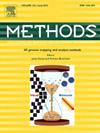Development and validation of the Azu-Eos as a fluorescence-free staining method for enhanced bright-field microscopy in the comet assay
IF 4.3
3区 生物学
Q1 BIOCHEMICAL RESEARCH METHODS
引用次数: 0
Abstract
The comet assay is a valuable technique for assessing cellular DNA damage due to intrinsic and environmental factors, particularly in studies of genotoxicity and mutagenesis. However, its broader application is limited by the need for fluorescent staining, the requirement for expensive fluorescent microscopes, and the inability to preserve and re-examine slides over time. We developed the Azure B-Eosin Y (Azu-Eos) staining method to visualise the comets under a standard bright-field microscope to overcome these limitations. The newly developed DNA-staining technique eliminates the need for fluorescence and allows unlimited slide storage and re-examination without quality deterioration. We optimised various factors to ensure the reliability and quality of bright-field stained comets, achieving results comparable to and even better than those obtained with traditional fluorescent dyes. This cost-effective, sensitive, and fluorescence-free method has broad potential applications in medicine, ecology, and environmental monitoring, enabling fast and on-site genotoxicity testing.
Azu-Eos作为一种无荧光染色方法的开发和验证,用于增强的彗星分析中的亮场显微镜。
彗星分析是一种有价值的技术,用于评估由于内在和环境因素引起的细胞DNA损伤,特别是在遗传毒性和诱变研究中。然而,由于需要荧光染色,需要昂贵的荧光显微镜,并且无法保存和重新检查载玻片,因此其更广泛的应用受到限制。为了克服这些限制,我们开发了Azure B-Eosin Y (Azu-Eos)染色方法,在标准亮场显微镜下观察彗星。新开发的dna染色技术消除了对荧光的需要,允许无限的切片储存和重新检查,而不会导致质量下降。我们优化了各种因素,以确保亮场染色彗星的可靠性和质量,取得了与传统荧光染料相当甚至更好的结果。这种低成本、灵敏、无荧光的方法在医学、生态和环境监测方面具有广泛的潜在应用,可以实现快速和现场的遗传毒性检测。
本文章由计算机程序翻译,如有差异,请以英文原文为准。
求助全文
约1分钟内获得全文
求助全文
来源期刊

Methods
生物-生化研究方法
CiteScore
9.80
自引率
2.10%
发文量
222
审稿时长
11.3 weeks
期刊介绍:
Methods focuses on rapidly developing techniques in the experimental biological and medical sciences.
Each topical issue, organized by a guest editor who is an expert in the area covered, consists solely of invited quality articles by specialist authors, many of them reviews. Issues are devoted to specific technical approaches with emphasis on clear detailed descriptions of protocols that allow them to be reproduced easily. The background information provided enables researchers to understand the principles underlying the methods; other helpful sections include comparisons of alternative methods giving the advantages and disadvantages of particular methods, guidance on avoiding potential pitfalls, and suggestions for troubleshooting.
 求助内容:
求助内容: 应助结果提醒方式:
应助结果提醒方式:


